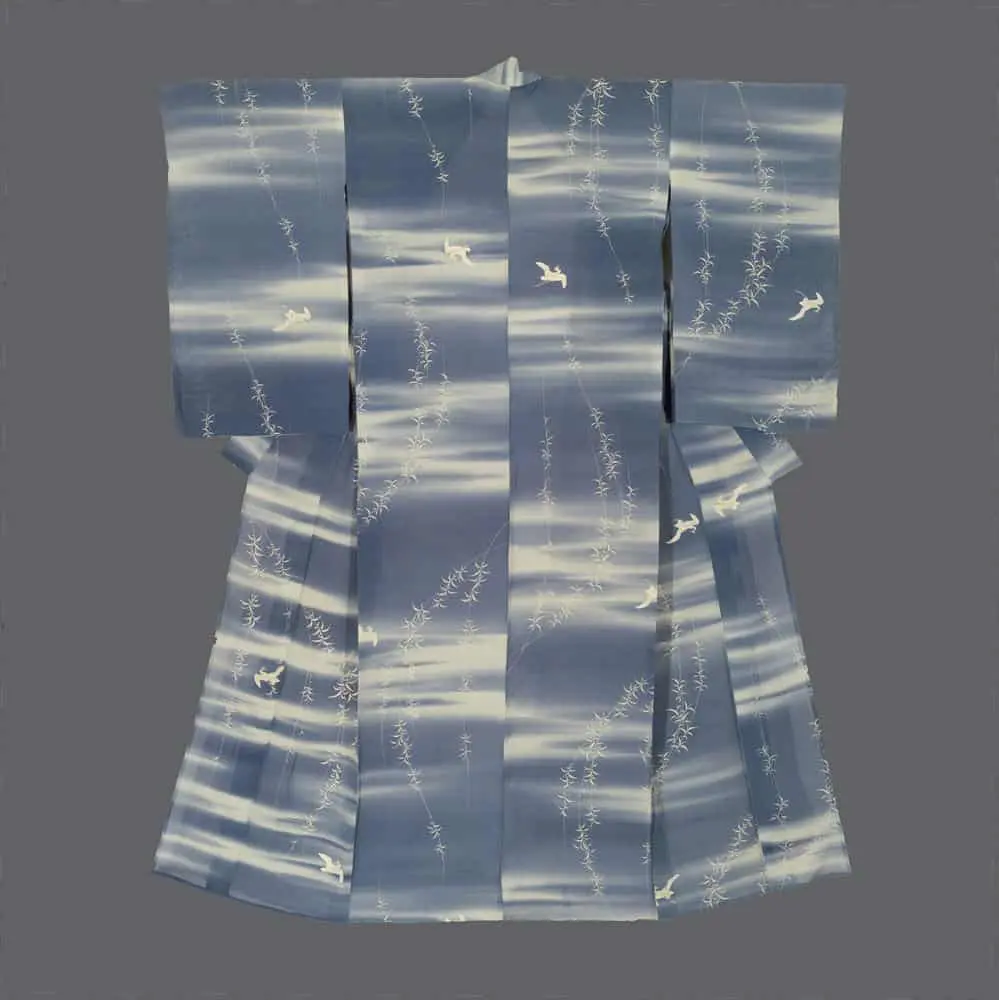This ethereal summer ro silk kimono from the interwar period represents a masterful fusion of traditional Japanese textile techniques with emerging modern production methods, creating a garment of extraordinary delicacy and atmospheric beauty. The sheer ro weave, characterized by its open gauze-like structure visible in the detail image, creates an almost translucent quality that perfectly captures the ephemeral nature of summer evenings, while the soft gradations of blue and white evoke the gentle transition from day to twilight. The silkscreened background provides subtle horizontal banding that suggests water or mist, against which delicate willow branches cascade in graceful vertical lines, their fine tracery achieved through precise resist-dyeing techniques that demonstrate the period's technical sophistication.
The hand-painted white herons scattered across this atmospheric landscape serve as focal points of pure elegance, their forms rendered with the minimal yet expressive brushwork characteristic of Japanese painting traditions. These birds carry deep symbolic significance—herons represent longevity, purity, and good fortune, while their association with water and marshlands connects them to themes of tranquility and natural harmony. The willow motifs (yanagi) traditionally symbolize grace and resilience, their drooping branches suggesting both melancholy beauty and the ability to bend without breaking, themes particularly resonant during the uncertain political climate of the 1930s.
This kimono exemplifies a sophisticated aesthetic philosophy by artists who were exploring new ways to capture the subtle beauty of natural phenomena through refined technical means. The combination of industrial silkscreen printing with individual hand-painting reflects the era's embrace of hybrid approaches that honored traditional craftsmanship while embracing modern efficiency. The overall effect achieves a remarkable sense of spatial depth and atmospheric perspective that anticipates the influence of Western landscape painting techniques while maintaining distinctly Japanese sensibilities of seasonal awareness and poetic restraint.
It measures 49 inches (124 cm) from sleeve-end to sleeve-end and stands at 61 inches (155 cm) tall.
.avif)














